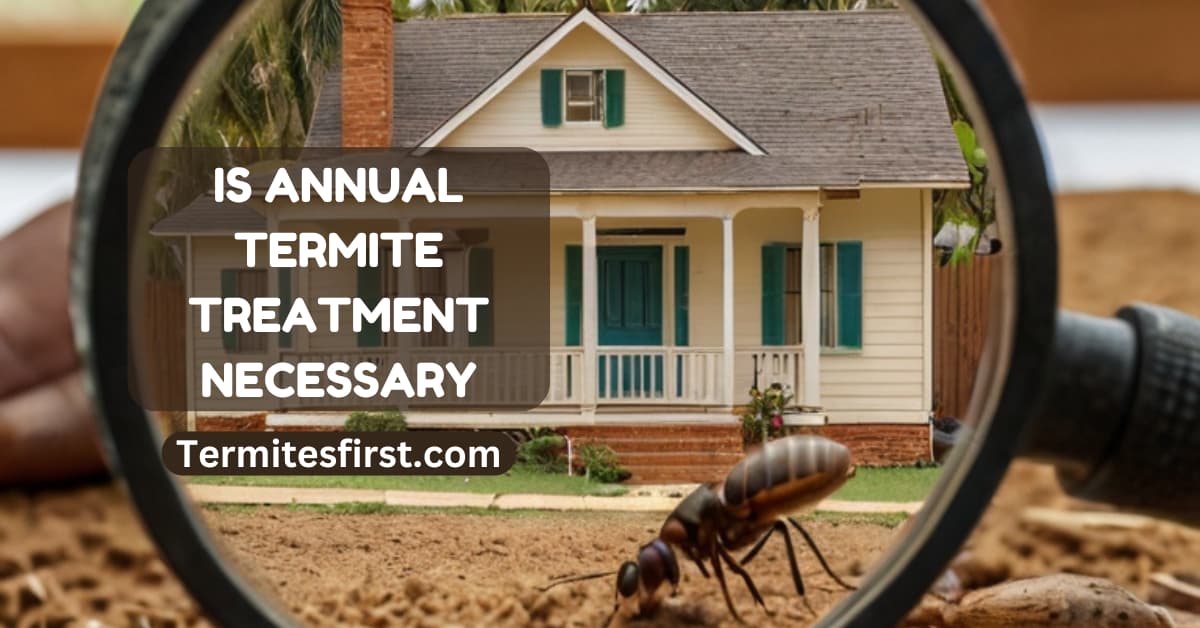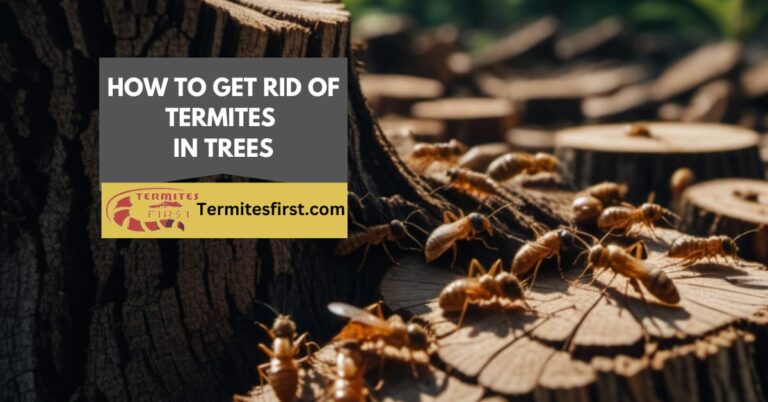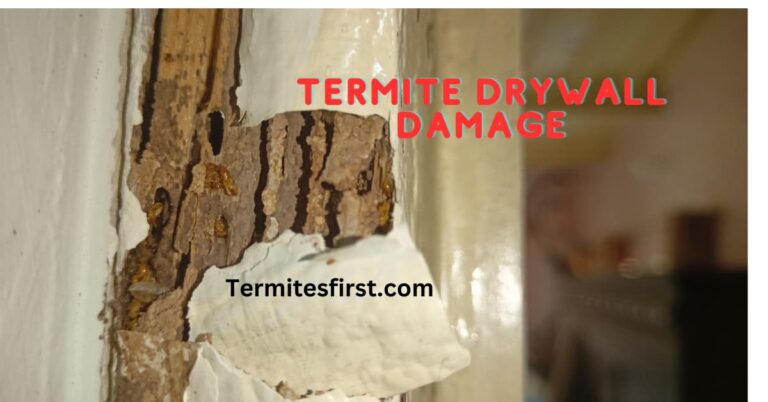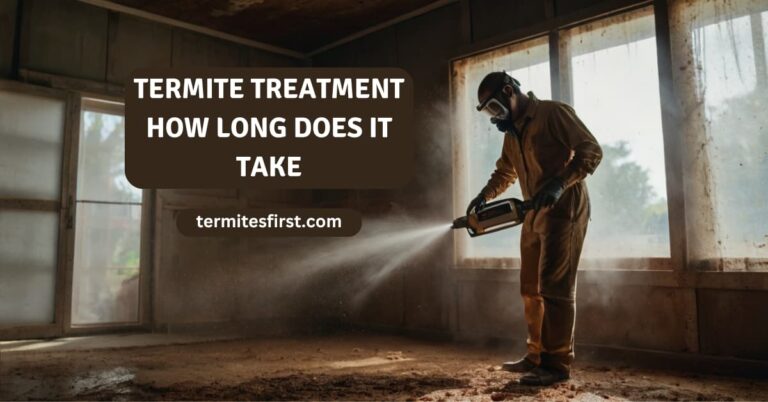Is Annual Termite Treatment Necessary?
I often wonder if annual termite treatment is necessary. On one hand, some homeowners think preventative termite treatment is an unnecessary expense. They believe a one-time treatment is enough. On the other hand, I see the value in regular termite inspections and experienced termite inspectors to prevent costly damage down the line. Termites can silently wreak havoc on a home, and their presence can be hard to detect until it’s too late.
In my experience, investing in annual treatment gives peace of mind. It ensures that my home remains protected from termite infestation year after year. The cost of potential repairs far outweighs the price of prevention. Let’s dive into why annual termite treatment might just be the best decision for your home.
Importance of Regular Termite Treatment
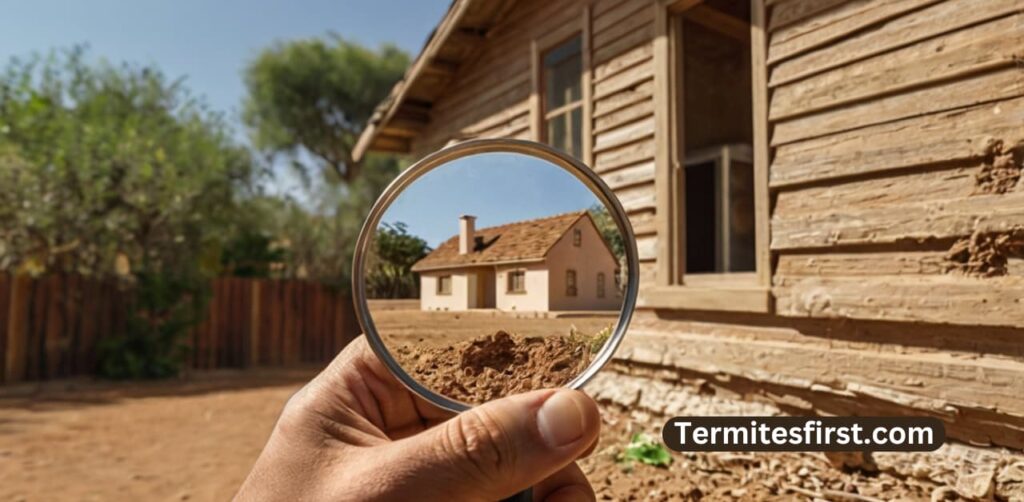
Significant Damage
Termites can cause substantial damage to structures. They feed on wood and can compromise the integrity of a building. Left untreated, infestations may lead to costly repairs. I have seen homes that required extensive renovations due to termite damage. The financial burden can be overwhelming for homeowners.
Regular termite treatments help prevent this destruction. Early detection through inspections identifies potential infestations before they escalate. This proactive approach protects your home and wallet.
Property Value Protection
Maintaining property value is crucial for homeowners. Regular termite treatments serve as a safeguard against infestations. A property with a history of termite issues may lose value quickly. Buyers often shy away from homes with pest problems.
I always recommend keeping up with regular termite inspections. They provide peace of mind and assure potential buyers that the property is in good condition. Protecting your investment should be a priority.
Peace of Mind
Consistent termite management offers reassurance to homeowners. Knowing that your home is treated regularly reduces anxiety about hidden infestations. Termites are often silent destroyers, making their presence hard to detect until significant damage occurs.
Regular inspections and treatments ensure you stay ahead of any threats. I find comfort in knowing my home undergoes routine checks. It allows me to focus on other aspects of homeownership without worry.
Long-Term Cost Efficiency
Investing in regular termite treatments saves money in the long run. Preventative measures are typically less expensive than repairing damage caused by an infestation. Homeowners can avoid the stress associated with unexpected repair costs.
A well-structured treatment plan can significantly reduce termite risk over time. I have learned that staying informed about pest control options is vital for effective management.
Environmental Considerations
Many modern termite control methods are environmentally friendly. Companies now use less toxic substances to protect homes while minimizing ecological impact. Homeowners should seek out these options for responsible pest control.
Education on these practices can lead to better choices for both your home and the environment. I appreciate companies that prioritize sustainable methods without compromising effectiveness.
When to Consider Termite Treatment
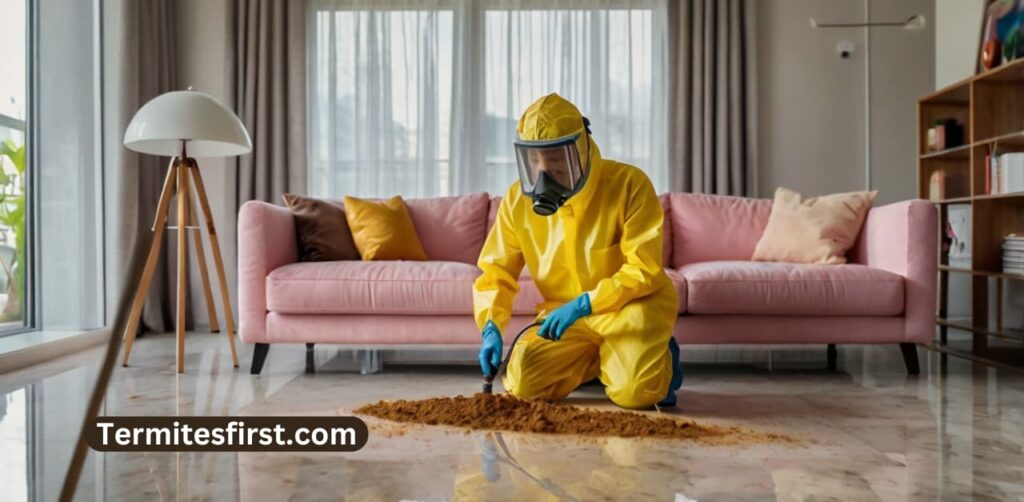
Signs of Activity
Assessing signs of termite activity is crucial. Look for mud tubes along walls or damaged wood. These indicators can signal an infestation. I once found mud tubes in my basement, which prompted immediate action. Ignoring these signs can lead to costly termite damage.
A professional termite inspection can provide peace of mind. Experienced termite inspectors know where to look for signs often missed by homeowners. They can identify potential termite problems before they escalate.
Home Age and Condition
Evaluate the age and condition of your home. Older structures may be more susceptible to infestations. Wood that has aged may have weakened spots, making it easier for termites to invade. My friend’s house, built in the 1970s, faced severe issues due to neglecting this factor.
If your home is older, consider scheduling regular termite inspections. This proactive approach helps ensure you catch any issues early. A comprehensive termite prevention plan can save you from future infestations.
Seasonal Changes
Consider seasonal changes when planning for termite treatment. Termite activity typically increases in spring and summer months. Warmer weather creates favorable conditions for these pests to thrive. I noticed a spike in pest activity around my home during these seasons.
Scheduling a professional termite inspection during these times can be beneficial. Inspectors often recommend treatments before peak season hits. This approach helps prevent potential infestations.
Termite-Prone Zones
Identify if you live in a termite-prone zone. Certain regions are more susceptible to infestations due to climate and soil conditions. Areas with high humidity levels often see greater termite activity.
Research local statistics on termite treatments and infestations in your area. This data can guide your decision-making process regarding considering termite protection.
Warranty and Insurance
Explore options for termite warranty or insurance. Some companies offer plans that cover treatment costs if termites return after treatment. Understanding these options can help mitigate long-term risks associated with termite damage.
Becoming informed about available warranties allows homeowners to plan effectively. It adds a layer of security against potential future infestations.
Factors Influencing Termite Infestations
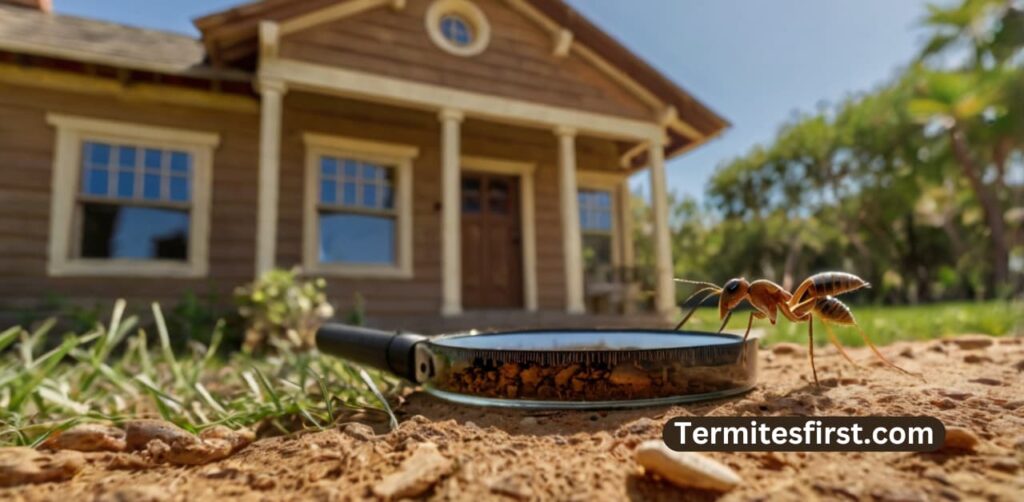
Geographic Location
Geographic location plays a crucial role in termite infestations. Some regions have higher termite activity due to their climate. For instance, warmer areas tend to support more termites. States like Florida and Texas report significant termite problems annually.
I have noticed that homes in humid environments often face more challenges with termites. The combination of warmth and moisture creates an ideal habitat for these pests. Areas with dry climates may experience fewer infestations, but they are not immune.
Construction Materials
Construction materials can significantly impact the likelihood of a termite infestation. Termites thrive on wood and cellulose-based products. Homes built with untreated wood are particularly vulnerable.
I’ve seen cases where homeowners unknowingly used materials that attract termites. For example, wood siding or mulch near the foundation increases risk. Concrete or steel frames offer better protection against these pests.
Environmental Conditions
Environmental conditions also influence termite behavior. High moisture levels create favorable habitats for termites to thrive. Areas with poor drainage or leaks can lead to increased dampness around the home.
I often recommend checking gutters and downspouts regularly. Proper maintenance helps reduce moisture buildup near the foundation. Landscaping choices can affect moisture levels around a home. Plants that retain water can create a humid environment, attracting termites.
Types of Termite Treatments
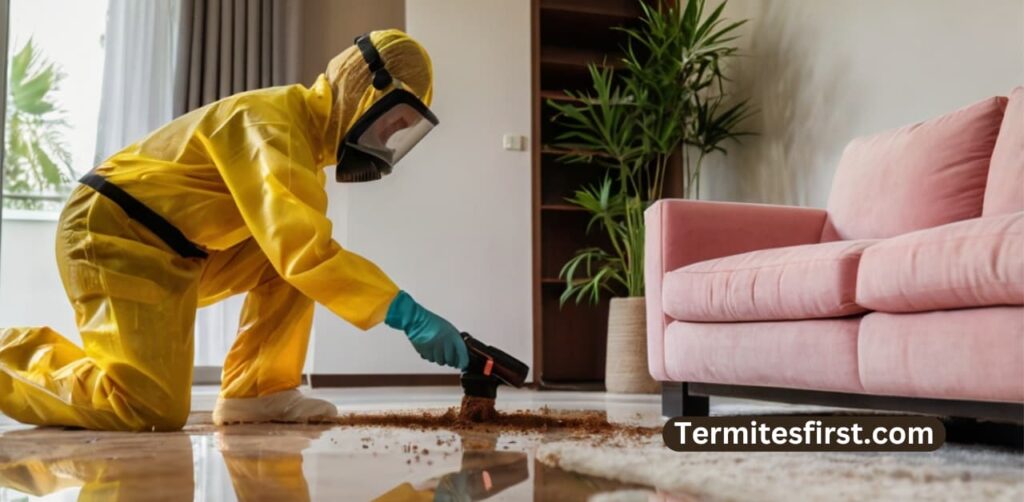
Chemical Treatments
Liquid termite treatments are common in pest control. They create a barrier that prevents termites from entering structures. These liquid barriers contain chemicals that are toxic to termites. I have seen the effectiveness of these treatments firsthand. When applied correctly, they can last for several years.
Bait systems offer another chemical option. These systems use bait stations placed around the property. Termites consume the bait and carry it back to their colony. This method targets the entire colony, not just individual insects. It can be an effective way to manage infestations.
Non-Chemical Methods
Non-chemical methods include heat treatment and borate applications. Heat treatment involves raising the temperature of infested areas to kill termites. This method is eco-friendly and avoids harmful chemicals. I appreciate how it minimizes environmental impact while still being effective.
Borate applications involve using a borate solution on wood surfaces. This method prevents future infestations by making wood less appealing to termites. It also helps protect against common termite infestations. Many homeowners find this approach beneficial for long-term protection.
Preventative vs Reactive Treatments
Preventative treatments focus on stopping infestations before they start. They often include regular inspections and maintenance of the property. I believe this proactive approach saves money in the long run.
Reactive treatments occur after an infestation is detected. They aim to eliminate existing termites quickly. While effective, these methods can be more costly due to damage repairs needed afterward. Homeowners should weigh the costs of both approaches carefully.
Preventative Treatments
- Regular inspections
- Liquid barriers
- Bait systems
Reactive Treatments
- Chemical extermination
- Heat treatments
- Damage repair services
Choosing between preventative and reactive termite control depends on individual circumstances. Factors include the age of the home, location, and previous infestations. A tailored approach often yields the best results.
Typical Treatment Costs
The cost of termite treatments varies widely based on several factors. These include the size of the property and the severity of the infestation. On average, homeowners can expect to pay between $200 to $2,500 for treatment options.
I recommend obtaining multiple quotes from different termite control companies. This helps ensure you receive fair pricing and quality service.
Benefits of Annual Treatments
Prevention
Annual treatments prevent severe infestations before they start. Regular inspections and treatments reduce the risk of termites establishing a colony in your home. I have seen firsthand how effective these proactive measures can be. A friend ignored her termite problem until it became a major issue. After extensive damage, she learned the hard way about the need for prevention.
Cost Savings
Avoiding extensive damage repairs leads to significant cost savings. Termites can cause thousands of dollars in damage if left unchecked. The expense of annual treatment is often much less than repairing structural damage caused by an infestation. I remember when my neighbor faced a hefty bill after neglecting his home for years. His experience reinforced my belief in investing in regular maintenance.
Convenience
A scheduled treatment plan offers ongoing protection with minimal effort. Homeowners can rest easy knowing that professionals will handle the work at regular intervals. This convenience allows me to focus on other priorities without worrying about potential infestations. Many pest control companies provide warranties that ensure continued protection after treatment. Such guarantees create peace of mind for homeowners.
Warranty Options
Most pest control services offer warranties with their annual treatments. These warranties guarantee that if termites return, the company will address the issue at no extra charge. Having this assurance can save both time and money in the long run. My own warranty has provided additional comfort, knowing that I am covered should any problems arise.
Loyal Service Providers
Developing a relationship with a reliable pest control service pays off over time. Loyal customers often receive discounts or special offers for annual treatments. These relationships foster trust and ensure that you receive quality service consistently. I appreciate having a go-to expert who understands my home’s specific needs.
Long-term Protection
Annual treatments contribute to long-term protection against termites. Regular maintenance keeps your home safe from potential threats while enhancing its value. Investing in these services proves beneficial in the long run, especially when selling your property. Buyers often prefer homes with documented pest control history.
Drawbacks of Regular Treatments
Financial Burden
Annual termite treatments can be costly. Homeowners often face significant expenses each year. The average cost for treatment ranges from $300 to $1,500, depending on the home’s size and location. Many homeowners may not need these treatments every year. I have seen friends invest heavily in yearly treatments only to find no signs of termites. This financial burden can strain budgets, especially when the effectiveness of these treatments is not guaranteed.
Chemical Exposure
Over-treatment poses risks beyond finances. Excessive use of chemicals can lead to unnecessary exposure in the home environment. Some pesticides contain harmful substances that can affect indoor air quality. Families with children or pets may be particularly vulnerable to these risks. I often consider my own home’s safety when thinking about pest control options. Reducing chemical exposure should be a priority for many homeowners.
Diminishing Returns
In low-risk areas, regular treatments may yield diminishing returns. Homes in regions with low termite activity might not benefit from annual applications. The likelihood of infestations decreases significantly in these locations. For instance, homes situated in colder climates face fewer termite threats due to temperature constraints. Many experts suggest that homeowners assess their local risk factors before committing to annual treatments.
Personal Experience
I once lived in an area known for its low termite risk. My neighbors opted for annual treatments, while I chose to monitor my property instead. After several years, I found no signs of termite activity. This experience highlighted how personal circumstances and local conditions greatly influence the necessity of regular treatments.
Alternatives to Annual Treatments
Homeowners should explore alternatives to annual treatments. Regular inspections by a qualified professional can identify potential issues without the need for constant chemical applications. Implementing preventive measures, such as proper drainage and ventilation, can also reduce infestation risks.
- Consider periodic inspections.
- Implement preventive maintenance.
- Monitor environmental conditions.
Impact of Environmental Factors
Climate Effects
Climate plays a significant role in termite behavior. Warmer temperatures can increase the activity of termites. In areas with high humidity, the chances of infestation rise. I have noticed that during hot summers, my neighborhood experiences more reports of termite problems.
Weather patterns also affect termite life cycles. For example, heavy rainfall can lead to increased moisture in the soil. This moisture is attractive to termites and may encourage them to nest closer to homes. Understanding local climate conditions helps homeowners gauge their risk levels.
Drainage Importance
Proper drainage is essential for preventing termite infestations. Water accumulation around a home creates an ideal environment for these pests. I often check the drainage systems in my area, especially after heavy rains.
Keeping gutters clear and ensuring downspouts direct water away from the foundation are critical steps. Homeowners should also inspect their yards for areas where water collects. Maintaining dry conditions reduces the likelihood of termites establishing colonies nearby.
Landscaping Choices
Landscaping decisions can either attract or deter termites. Certain plants and wood mulch can provide food sources for these pests. For instance, using untreated wood chips as mulch can invite termites into gardens.
On the other hand, some landscaping choices help protect against infestations. Planting native species that require less water may reduce moisture levels in the soil. Creating barriers with gravel or stones around the foundation can hinder termite access.
Homeowners must be mindful of how their landscaping interacts with environmental conditions. I have made changes to my garden by removing potential food sources for termites. This proactive approach gives me peace of mind about my home’s safety.
Modern Building Practices and Termites
Advancements in Materials
New building materials have emerged. These materials offer better resistance to termite damage. For instance, composite wood products treated with preservatives can deter termites effectively. I have seen these materials used in many modern homes. They provide a long-lasting solution against infestations.
Concrete and steel are also common in new constructions. These materials do not attract termites like wood does. Homeowners should consider these options when building or renovating their properties. Choosing the right materials can significantly reduce the risk of termite issues.
Design Features
Proper design features play a crucial role in preventing termite infestations. Adequate ventilation is essential in crawl spaces and attics. It helps to reduce moisture levels, which attracts termites. I always recommend ensuring that these areas are well-ventilated during inspections.
Foundation treatments are another important aspect. A properly constructed foundation can act as a barrier against termites. This includes using physical barriers like metal mesh or treated soil around the foundation. These measures help prevent termites from entering the home.
Sustainable Practices
Sustainable building practices contribute to reducing termite risks. Eco-friendly designs often incorporate natural pest deterrents. For example, certain landscaping choices can minimize moisture near the house, making it less attractive to termites. I find that using native plants helps create a balanced ecosystem that deters pests.
Sustainable buildings often use recycled materials treated for pest resistance. These practices not only benefit the environment but also protect properties from termite damage.
Importance of Inspections
Regular inspections by termite inspectors are vital for property owners. They can identify signs of past infestations or potential risks early on. Homeowners should ensure that inspections occur annually, especially if the property has a history of termite problems or if the previous owner had issues.
A contract with a pest control company may include regular inspections and treatments. This proactive approach can save homeowners from costly repairs down the line.
Evaluating the Need for Annual Treatment
Individual Circumstances
Homeowners should assess their individual circumstances. Factors such as location and home structure play a critical role. Homes in warmer climates may face higher termite activity. Older homes with wood structures are more vulnerable. I have seen how different environments impact termite presence. For instance, my friend’s house near a wooded area faced severe infestations.
Understanding your specific situation helps determine if annual treatment is necessary. Regular inspections can reveal hidden issues. A professional inspection identifies potential risks before they escalate. It’s important to consider both the condition of your home and local termite activity levels.
Expert Consultation
Consulting with pest control experts is essential. They provide insights tailored to specific situations and risk factors. An expert can evaluate your home’s vulnerability to termites. They can also recommend treatment options based on findings. Their experience offers valuable guidance on whether annual treatments are needed.
I once spoke with a pest control specialist who emphasized the importance of tailored advice. Every property is unique, and so are its needs regarding termite management. Engaging with professionals ensures you make informed decisions.
Benefits of Regular Inspections
Weighing the benefits of regular inspections against the need for annual treatments is crucial. Regular inspections help catch problems early. They allow homeowners to address potential infestations before they become serious.
Annual treatments can be beneficial in high-risk areas but may not be necessary for everyone. Homeowners should consider their budget and peace of mind when deciding. In my case, I opted for biannual inspections instead of annual treatments. This strategy offered me reassurance without excessive costs.
Regular inspections can also lead to better maintenance practices. Homeowners who stay informed about their property’s condition tend to address issues promptly. This proactive approach often reduces the need for extensive treatments later on.
Making Informed Decisions
Informed decisions require balancing various factors. Consider your home’s history with termites, local climate, and structural vulnerabilities. Regular inspections provide peace of mind and keep potential issues in check.
It’s wise to create a plan that fits your circumstances. If you live in an area prone to termites, annual treatment may be worthwhile. However, if your home remains structurally sound, less frequent interventions might suffice.
Conclusion:
I believe annual termite treatment is essential for safeguarding my property. Regular treatments help prevent infestations and protect my investment. While there are pros and cons, the benefits often outweigh the drawbacks. Staying informed about the factors that influence termite activity can make a big difference in how I approach treatment.
Ultimately, it’s about finding what works best for me. If I notice signs of termites or live in a high-risk area, I know it’s time to act. I recommend consulting a pest control professional to evaluate my specific situation. Taking proactive steps today ensures peace of mind tomorrow. Don’t wait until it’s too late—protect your home now!
FAQ’s:
Annual termite treatment is highly recommended for proactive pest control. It helps prevent infestations, protecting your home and investment from potential damage.
It’s advisable to have a professional inspection at least once a year. Regular inspections catch early signs of infestation, allowing for timely intervention.
Common signs include mud tubes, discarded wings, hollow-sounding wood, and frass (termite droppings). Early detection is crucial to mitigate damage.
While DIY treatments are available, they may not be effective for severe infestations. Professional pest control ensures thorough treatment and long-term protection.
Geographic location, climate, and the age of your home can all impact termite risk. Homes in warmer climates or near wood sources are more vulnerable.
Yes, there are eco-friendly options like heat treatments and borate-based solutions. These methods minimize chemical exposure while effectively managing termite populations.
Contact a licensed pest control professional immediately. Quick action can prevent extensive damage and ensure effective treatment strategies are employed.

